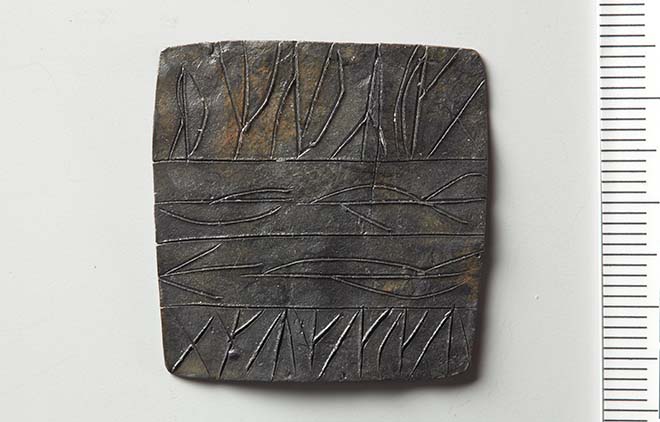The research group takes a multidisciplinary approach to inscriptions and script-bearing objects. Our understanding of the concept of ‘inscription’ is broad and inclusive: We are interested in different forms of intentionally produced markings that occur on varied objects and surfaces. Inscriptions are examined in relation to the manifold visual and material features of objects. The group synthesizes theoretical and methodological perspectives from the fields of epigraphy, iconography and archaeology, with significant tools gained from digital documentation as well as analytical sciences.
The objectives of the research group include mapping, exploring and evaluating newer ways of analyzing and documenting inscriptions in connection with different types of object. One area of interest consists of the museum’s increasing metal detecting finds, such as inscribed lead amulets, seal matrices, weights, tokens, finger rings, etc. The group is trying out new approaches and methods of analysis (e.g. neutron tomography and virtual unwrapping of folded lead amulets). In addition to metal detecting finds, we work with other script-bearing objects that belong to the museum’s collections or are preserved in their original settings (from rune-stones to church building graffiti). The Museum of Cultural History has ongoing initiatives of digital documentation of objects (e.g. photogrammetry, 3d modelling); this work also provides new opportunities for research and dissemination of inscriptions and inscribed objects.
The group draws on the expertise of several of the museum's departments and has both internal and external members. The members have expertise in the fields of:
- runology and epigraphy
- archaeology
- scientific conservation
- analytical methods and technology
- digital humanities
- photogrammetry
- 3D documentation
- databases
- public outreach
